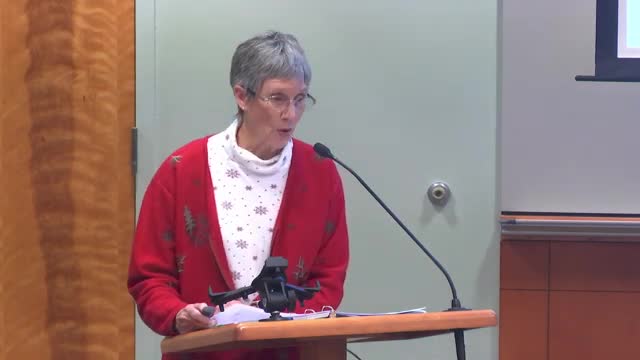Olympia's Red Light District Disbanded as City Expands for Industrial Growth
This article was created by AI summarizing key points discussed. AI makes mistakes, so for full details and context, please refer to the video of the full meeting. Please report any errors so we can fix them. Report an error »

In the heart of Lacey, Washington, a recent government meeting delved into the rich and often overlooked history of the city, particularly focusing on the themes of love and relationships that transcended societal norms. As city officials gathered, the discussion illuminated the complexities of romantic connections in the past, including those that existed outside traditional heterosexual boundaries.
One of the key topics was the historical presence of the red light district in Lacey, which was bounded by State Avenue and Columbia Street. This area, as revealed through a Sanborn insurance map from 1891, was home to numerous establishments labeled as "femme boarding," a euphemism for brothels. The meeting highlighted that during this time, the city had a relatively open attitude towards sex work, with records indicating that twelve women in the neighborhood self-identified as prostitutes in the 1900 census. However, by 1909, the city’s plans for industrial expansion led to the disbandment of the red light district, pushing its inhabitants into the shadows and marking a shift in societal acceptance.
The conversation also ventured into the realm of same-sex relationships, revealing that romantic attraction between members of the same sex was never criminalized in Washington territory or state. While a law was enacted in 1893 that prohibited certain sexual acts, it did not lead to prosecutions for lesbian relationships. Notably, the meeting referenced the work of historian Stephanie Coontz, who noted that intense physical intimacy among women was common and often prioritized over familial ties, challenging modern perceptions of relationships.
The discussion also touched on the life of Abby Howard Hunt Stewart, a prominent figure in Olympia’s history and founder of the Olympia Woman's Club. Stewart, known for her unconventional appearance and demeanor, was involved in two widely publicized cases concerning allegations of improper relations with another woman, illustrating the societal tensions surrounding female friendships that defied the norms of their time.
As the meeting concluded, it became clear that Lacey's history is not just a tale of industrial growth but also a narrative rich with stories of love, resilience, and the evolving understanding of relationships. The insights shared during this gathering serve as a reminder of the complexities of human connections and the importance of acknowledging all facets of history as the city moves forward.
One of the key topics was the historical presence of the red light district in Lacey, which was bounded by State Avenue and Columbia Street. This area, as revealed through a Sanborn insurance map from 1891, was home to numerous establishments labeled as "femme boarding," a euphemism for brothels. The meeting highlighted that during this time, the city had a relatively open attitude towards sex work, with records indicating that twelve women in the neighborhood self-identified as prostitutes in the 1900 census. However, by 1909, the city’s plans for industrial expansion led to the disbandment of the red light district, pushing its inhabitants into the shadows and marking a shift in societal acceptance.
The conversation also ventured into the realm of same-sex relationships, revealing that romantic attraction between members of the same sex was never criminalized in Washington territory or state. While a law was enacted in 1893 that prohibited certain sexual acts, it did not lead to prosecutions for lesbian relationships. Notably, the meeting referenced the work of historian Stephanie Coontz, who noted that intense physical intimacy among women was common and often prioritized over familial ties, challenging modern perceptions of relationships.
The discussion also touched on the life of Abby Howard Hunt Stewart, a prominent figure in Olympia’s history and founder of the Olympia Woman's Club. Stewart, known for her unconventional appearance and demeanor, was involved in two widely publicized cases concerning allegations of improper relations with another woman, illustrating the societal tensions surrounding female friendships that defied the norms of their time.
As the meeting concluded, it became clear that Lacey's history is not just a tale of industrial growth but also a narrative rich with stories of love, resilience, and the evolving understanding of relationships. The insights shared during this gathering serve as a reminder of the complexities of human connections and the importance of acknowledging all facets of history as the city moves forward.
View full meeting
This article is based on a recent meeting—watch the full video and explore the complete transcript for deeper insights into the discussion.
View full meeting